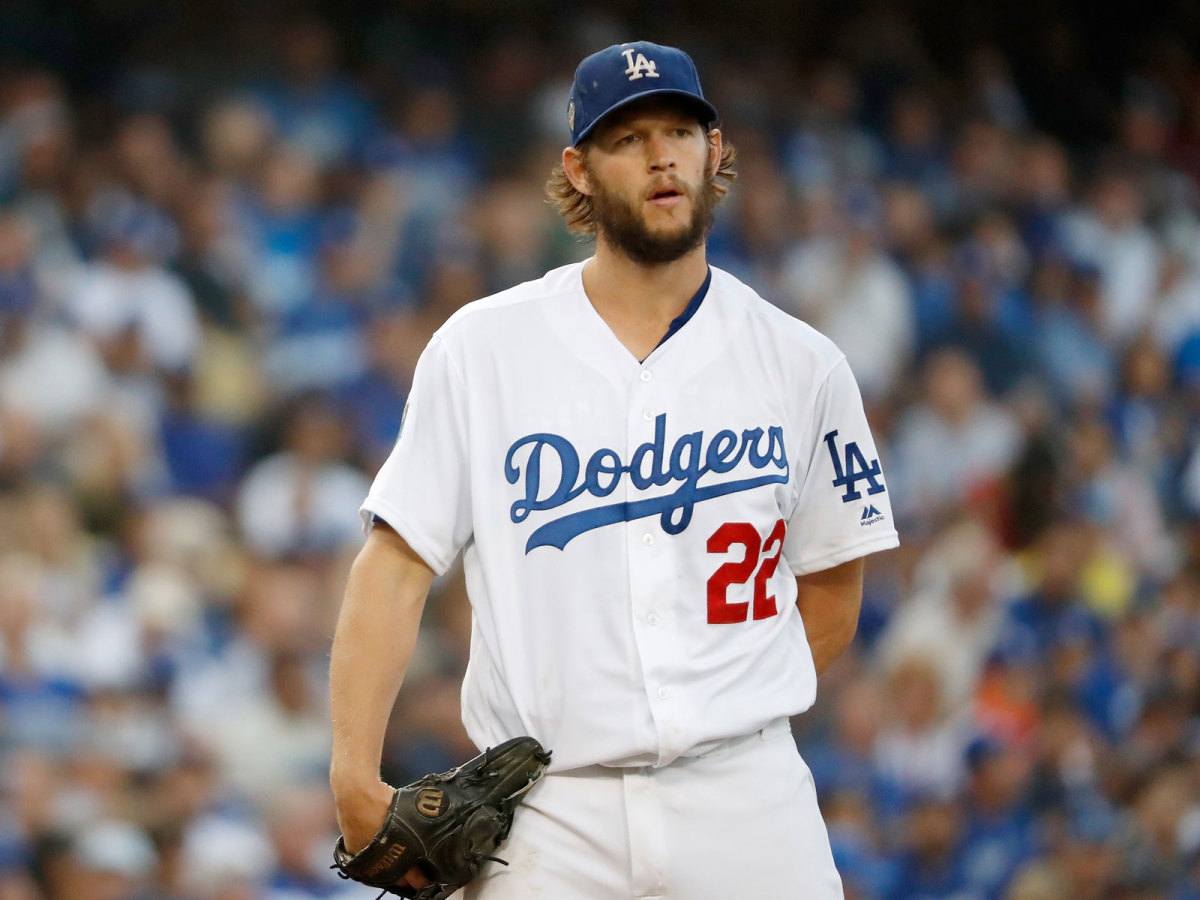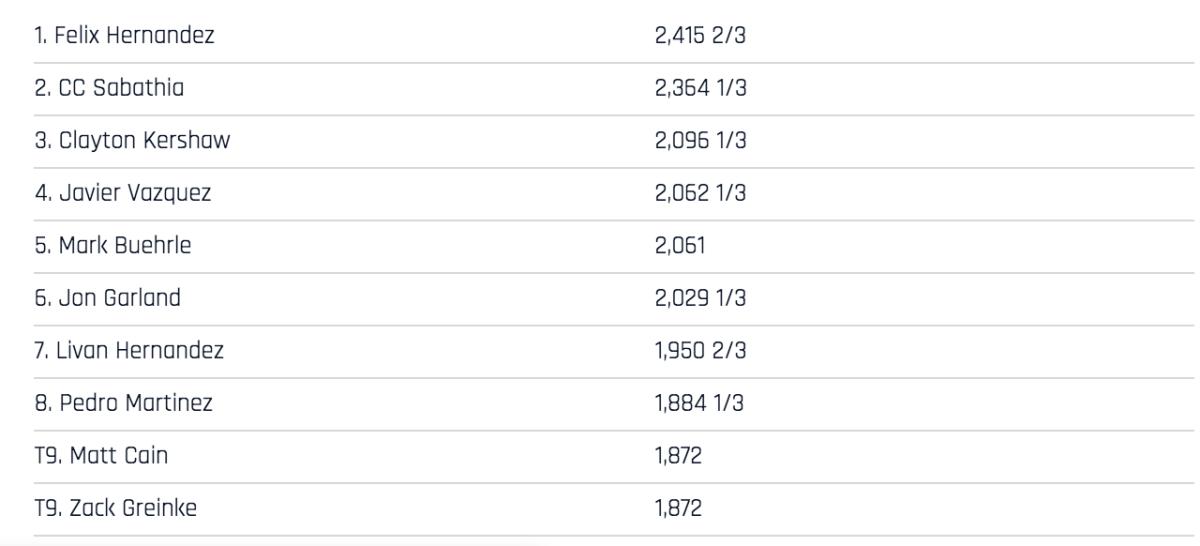Will Clayton Kershaw Maintain His Dominance Despite His Significant Drop in Velocity?

How much does Clayton Kershaw have left in his left arm? He better hope that his last start, World Series Game 5, is not a clue to how he ages through his 30s. Kershaw, who turns 31 in March, threw 92 pitches in Game 5. His hardest pitch was only 91.6 MPH. Among the “pitchers” who threw harder than that in the regular season were utility players Jace Peterson and Charlie Culberson.
Kershaw obtained only four swings and misses—matching the fewest in his past 221 starts (postseason included), all of which occurred this year. His stuff was ordinary. It was worse in Game 1. Off that last look will Kershaw and the Dodgers decide his future.
The Dodgers extended a deadline to 4 p.m. today for Kershaw to decide whether to opt-out of the two years and $65 million left on his contract. The extension gives Los Angeles more time to work out a deal with more years to his contract—he’s not getting the same average annual value, just guaranteeing future income before his leverage recedes further over the next two years. It also gives the Dodgers time to make sure a franchise icon remains where he should.
The Rangers? Kershaw should not be taking his stuff to the American League at this point in his career. The Dodgers know Kershaw is trending down in terms of his arm strength and his ability to miss bats.
The average four-seam fastball is 93.2 MPH. Kershaw threw only three pitches this season at 93 MPH or more—the last time on July 27. Since then he threw 1,484 pitches—none that hit 93 MPH. (His high in the postseason was 92.7 MPH.) Look at this red flag on arm strength:

And look at this trend line:
Kershaw Fastball by Year, Regular & Postseason

Kershaw lives on his slider now. That pitch has gained velocity, and when he doesn’t have it, as happened in an awful Game 1 start, he is doomed.
What Kershaw still has is an intense competitive streak, tremendous game preparation work habits and an uncanny ability to repeat his delivery with the same release point for all three of his pitches—making it hard for hitters to pick up his pitches early.
Many people dropped their jaws when they saw Kershaw working in the Fenway Park bullpen two days before his Game 1 start. Please. Kershaw for years has been using these “dry” bullpen sessions regularly (he goes through his motion without a baseball). It’s how he’s able to repeat his delivery – by practicing over and over without the wear and tear of actually throwing. The difference in his release points on his three pitches typically differs by no more than half an inch – imperceptible to the hitter.

Those qualities—competitiveness, preparation and mechanics—will continue to serve him well. But how does he age if his fastball doesn’t come back?
This season Kershaw averaged 90.8 mph on his four-seam fastball. Three years ago, in 2015, there were 17 starters with a fastball velocity that low (with at least 200 fastballs). Ten of them are out of baseball. The remaining seven are primarily sinkerball pitchers (Dallas Keuchel) or journeymen (Tommy Milone, Marco Estrada, Mike Fiers, Chris Rusin, Jeremy Hellickson and Bartolo Colon).
Now keep in mind Kershaw’s workload when you think about his ability to restore his velocity. Over the past 25 years he has thrown more regular season innings through age 30 than all but two pitchers. On this top 10 list, few aged well:
Most Innings Through Age 30, 1993–2018

Kershaw did throw 191.1 innings this year. It’s possible that he was gassed by the time he ran into the Boston Red Sox, the highest-scoring team in baseball. They hit .318 against him. They swung and missed at only four of his 75 fastballs, just 12 times overall in the two World Series games.
The warning signs have been there for three years. Kershaw can still be a quality major league pitcher with a below-average fastball, just not an elite one. The Dodgers will count on his know-how and competitiveness, just as the Yankees have with Sabathia, his closest comp.
Sabathia held an opt-out after the 2011 season. He had just pitched his age 30 season—same as Kershaw—and was coming off a better season (19–8, 3.00). Sabathia had four years and $92 million left on his deal when he held an opt-out.
The Yankees negotiated with him right up to the day of his deadline for opting out and signed him to an extension. They added one year at $30 million. Since age 31, while he lost velocity and transitioned to a sinker/cutter/slider pitcher, Sabathia has been a little better than average: 70–57 with a 4.09 ERA, 4.17 FFIP and 103 ERA+.
***
The reason Dodgers manager Dave Roberts became such a focal point in the World Series is that his offense did not produce, which put stress on his bullpen, which made every pitching move critical. And the reason his offense did not produce is because teams this postseason attacked Los Angeles hitters with pitches up in the zone, and they did not adjust.
The Dodgers hit .111 this postseason on pitches up. (The other playoff teams hit .179, including .232 by Boston). Max Muncy, Manny Machado, Cody Bellinger, Enrique Hernandez, Joc Pederson, Brian Dozier, Matt Kemp, Yasmani Grandal, Austin Barnes and Chris Taylor combined to hit .068 on high pitches (5-for-78).
Los Angeles led the National League in highest launch angle during the regular season (13.6 degrees). It was even higher in the postseason (14.8, highest among all playoff teams).
The high-spin, high-velocity fastball up in the zone has been the best antidote to the Launch Angle Revolution. Hitters don’t want to hit grounders; slug is still in the air. But in today’s game hitters can’t just have one swing. As the Dodgers proved in the postseason, you better develop a “B” swing to go along with your “A” swing to get on top of high fastballs.
